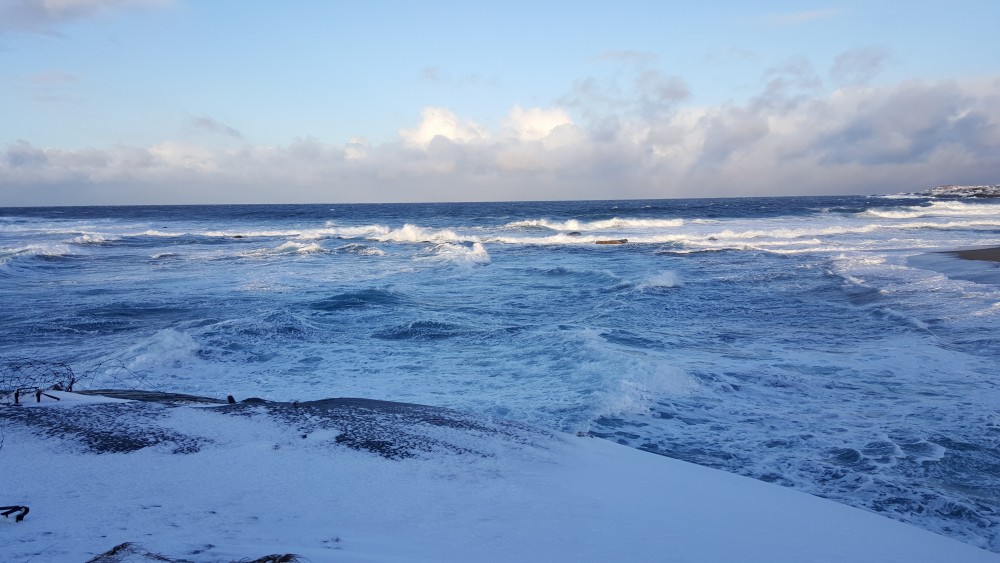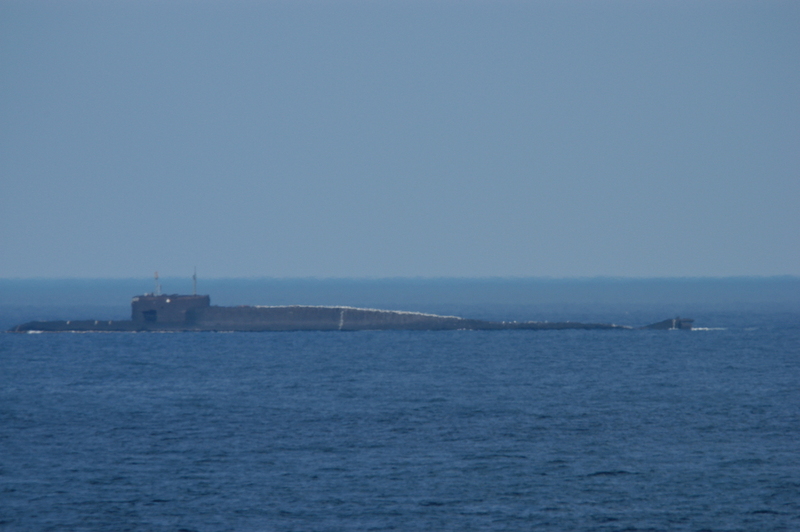
Pentagon warns of risk of Chinese submarines in the Arctic
ADVERTISEMENT
Text: Levon Sevunts
The one-page assessment of the potential Chinese threat in the Arctic is included in the Pentagon’s annual report to Congress on China’s armed forces and comes amid growing interest within the U.S. military to beef up its own operations in the Arctic and sub-Arctic regions of the world.
The Pentagon’s assessment notes that China has increased activities and engagement in the Arctic region since gaining observer status on the Arctic Council in 2013.
China has shown a keen economic and scientific interest in the region. Beijing created a polar research institute in 2009 and has organized several scientific expeditions in the Arctic.
China maintains research stations in Iceland and Norway and operates one Ukrainian-built icebreaking research vessel, the Xuelong (Snow Dragon), which in 2017 completed its eighth Arctic expedition and became the first Chinese official vessel to traverse Canada’s Northwest Passage, the report notes.

‘A near-Arctic state’
China is also building a new icebreaker capable of operating in the Arctic, which is expected to enter service in 2019.
ADVERTISEMENT
In January 2018, Beijing published a white paper on the Arctic, which describes China as a “near-Arctic” state and “an important stakeholder in Arctic affairs.”
The strategy identifies China’s interests as access to natural resources, securing Arctic sea lines of communications (SLOCs), and promoting an image of a “responsible major country” in Arctic affairs, the Pentagon assessment says.
That has prompted concerns from Arctic states over Beijing’s long-term strategic objectives, including possible military deployments.
The Pentagon report noted that Denmark has expressed concern about China’s interest in Greenland, which has included proposals to establish a research station and a satellite ground station, renovate airports and expand mining.
“Civilian research could support a strengthened Chinese military presence in the Arctic Ocean, which could include deploying submarines to the region as a deterrent against nuclear attacks,” the report said.
Designing Arctic-capable submarines
Rob Huebert, senior research fellow with the Centre for Military and Strategic Studies at the University of Calgary, said given “the inevitable logic” of what the Chinese are doing in the Arctic, a discussion of the eventual appearance of their submarines had to take place.
The Pentagon report noted that China’s military has made modernizing its submarine fleet a high priority. China’s navy operates four nuclear-powered ballistic missile submarines, six nuclear-powered attack submarines and 50 conventionally powered attack submarines, the report said.
However, there are no reports in any open source literature that would lead experts to believe that the Chinese military has already gained the technological capability and the know-how to operate submarines in the Arctic, Huebert said.
However, given the closed and secretive nature of the Chinese political system and its military, it would be very easy for them to hide preparations for deploying submarines to the Arctic, Huebert said.
“They can hide the necessary ice strengthening that is required for their submarines to enter ice conditions and so we would not be seeing them doing the necessary work for the emplacement of the upward-looking sonar, the hardening of their sail, the retractable fins: All of this can just simply be hidden from sight as they’re doing it,” Huebert said.
Gaining Arctic operational know-how
Also, in order for the Chinese navy to operate in the Arctic, they need to have good charts of the poorly charted region, Huebert said.
“What I strongly suspect is that the Chinese have been utilizing both their scientific contacts to be able to get access to various forms of mapping with their scientific co-operation but, more to the point, I think that they have probably have been using the Xuelong as a means of mapping the ocean bottom,” Huebert said.
“If you look at the overall passages where the Xuelong has gone, you can see quite clearly these are regions you would want to be sending submarines.”
In that sense, the Chinese would be doing what the U.S. and the Soviet Union did when they began sending their submarines under the Arctic ice, he said.
Security implications for Canada
Chinese submarine presence in the Arctic would have huge implications for Canada and the defence of North America under the bi-national U.S.-Canada North American Aerospace Defence Command, which since 2005 is also responsible for looking for underwater threats, Huebert said.
“When you’re dealing with the Russians, you sort of know how they operate. You have certain givens that you can appreciate,” Huebert said. “You have the Chinese enter into this environment and all of a sudden you’ve got a much, much, more complicated problem.”
NORAD would have to develop the means of, not only detecting the Chinese submarines, but also distinguishing them from the Russian submarines, he said.
“In an international crisis knowing the difference, of course, will be critical,” Huebert said. “And so for Canada, all of a sudden the security enforcement of its maritime approaches just becomes that much more difficult as we move into an era that Chinese submarines do start appearing [in the Arctic].”

No present threat to Canada
Whitney Lackenbauer, Canada Research Chair in the Study of the Canadian North at Trent University, said the one-page chapter on China’s Arctic interests in the Pentagon’s assessment is essentially a summary of China’s 2018 Arctic strategy.
“Noting Arctic states’ concerns about growing Chinese interest is hardly a novel observation, and certainly is not a new revelation,” Lackenbauer said.
Furthermore, the statement that “civilian research could support a strengthened Chinese military presence in the Arctic Ocean, which could include deploying submarines to the region as a deterrent against nuclear attacks” is merely a statement of potentiality and is written in a speculative manner, he added.
“Certainly Arctic analysts note that China and other states could be using scientific research as a vehicle to gather data with a potential future military application, which the Office of the Secretary of Defense’s report to Congress acknowledges,” Lackenbauer said.
“This is something that Arctic coastal states are certainly monitoring, and speaks to the need for enhanced domain awareness, but the rather general statement in this report should not be over-amplified to suggest an immediate Chinese threat to the Arctic sovereignty of Canada or any other Arctic state. To do so would be not only alarmist but irresponsible.”
This story is posted on Independent Barents Observer as part of Eye on the Arctic, a collaborative partnership between public and private circumpolar media organizations.








